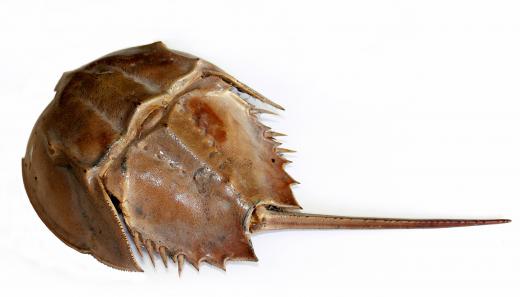What is a Phylogenetic Relic?
 Michael Anissimov
Michael Anissimov
A phylogenetic relic is a bodily organ that has lost its true use and only still exists because there is no particularly strong selection pressure against its existence. A common examples in humans is the appendix. The appendix is thought to be a phylogenetic relic of a bodily organ present in many herbivores called the cecum, which contains special bacteria for digesting cellulose, the hard material in plants. The human appendix lacks these bacteria, so people cannot digest cellulose.
The pineal gland was once thought to be a phylogenetic relic, until the 1960s when it was discovered that it produced melatonin, a hormone that modulates circadian rhythms. The uniqueness and mysteriousness of the pineal gland caused René Descartes to call it the "seat of the soul," a bodily organ which connected humans to God, though we haven't seen this theory advanced in the biology journals lately.

Sometimes the term phylogenetic relic is also used to describe species who lack any contemporary cousin species, and have more in common with the species that lived hundreds of millions of years ago than those of today. These include cycads, the horseshoe crab, and the famous coelacanth, originally thought to have been extinct for tens of millions of years, which was caught off the coast of Africa in 1938. These species have changed little over the course of hundreds of millions of years. Phylogenetic relics are also sometimes referred to as living fossils.

The Vampire Squid, or Vampyroteuthis infernalis, which means "vampire squid from hell," is a small velvety black organism that dwells deep in the ocean. It is neither a squid nor octopus but a phylogenetic relic of a largely extinct phylum. The tuatara, a type of reptile, has a highly developed pineal gland, with a median pineal eye, paraphysis and a pineal sac, in great contrast to our homogeneous pineal gland, suggesting that the pineal gland is indeed a part-relic despite its small hormonal role in humans. Evidence such as this lets us assess whether or not a particular bodily organ or species is a phylogenetic relic.

At one point or another, biologists have claimed various shark, rodent, crustacean, plant, and many others as phylogenetic relics. One crustacean, Neoglyphea neocaledonica, looks like a bizarre cross between a shrimp and a lobster. There are many other interesting living fossils you can find if you do an internet search for the term.
AS FEATURED ON:
AS FEATURED ON:














Discuss this Article
Post your comments